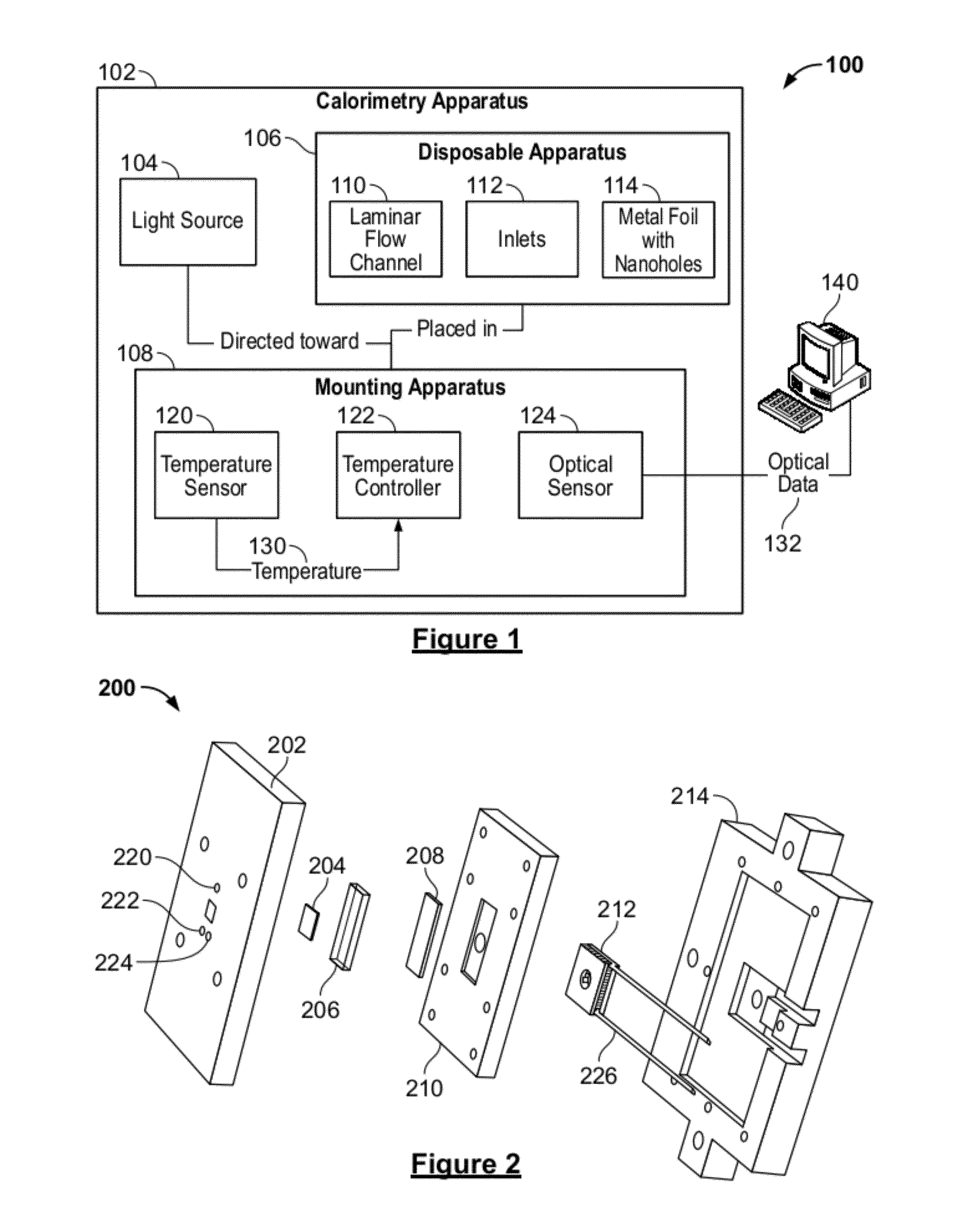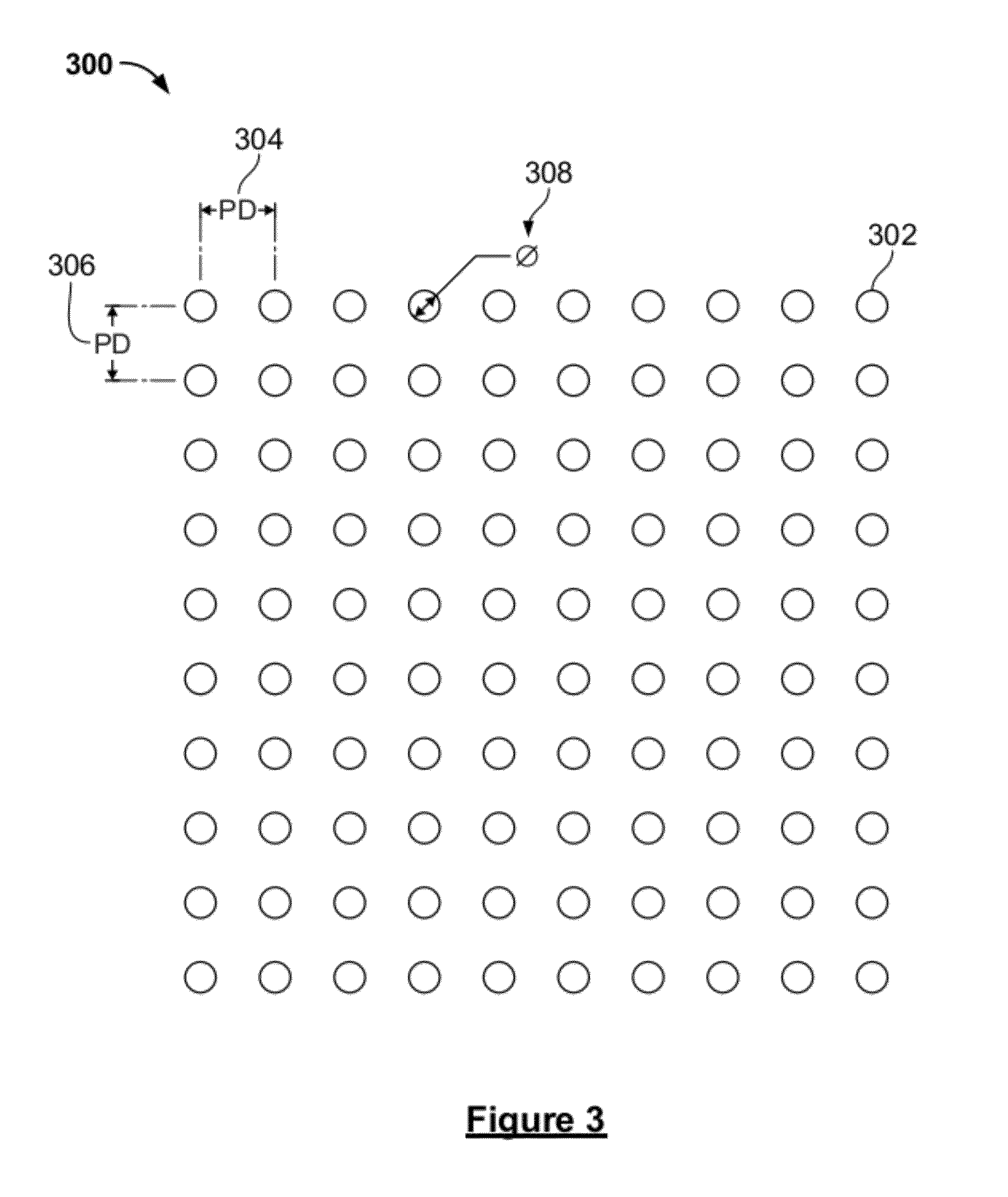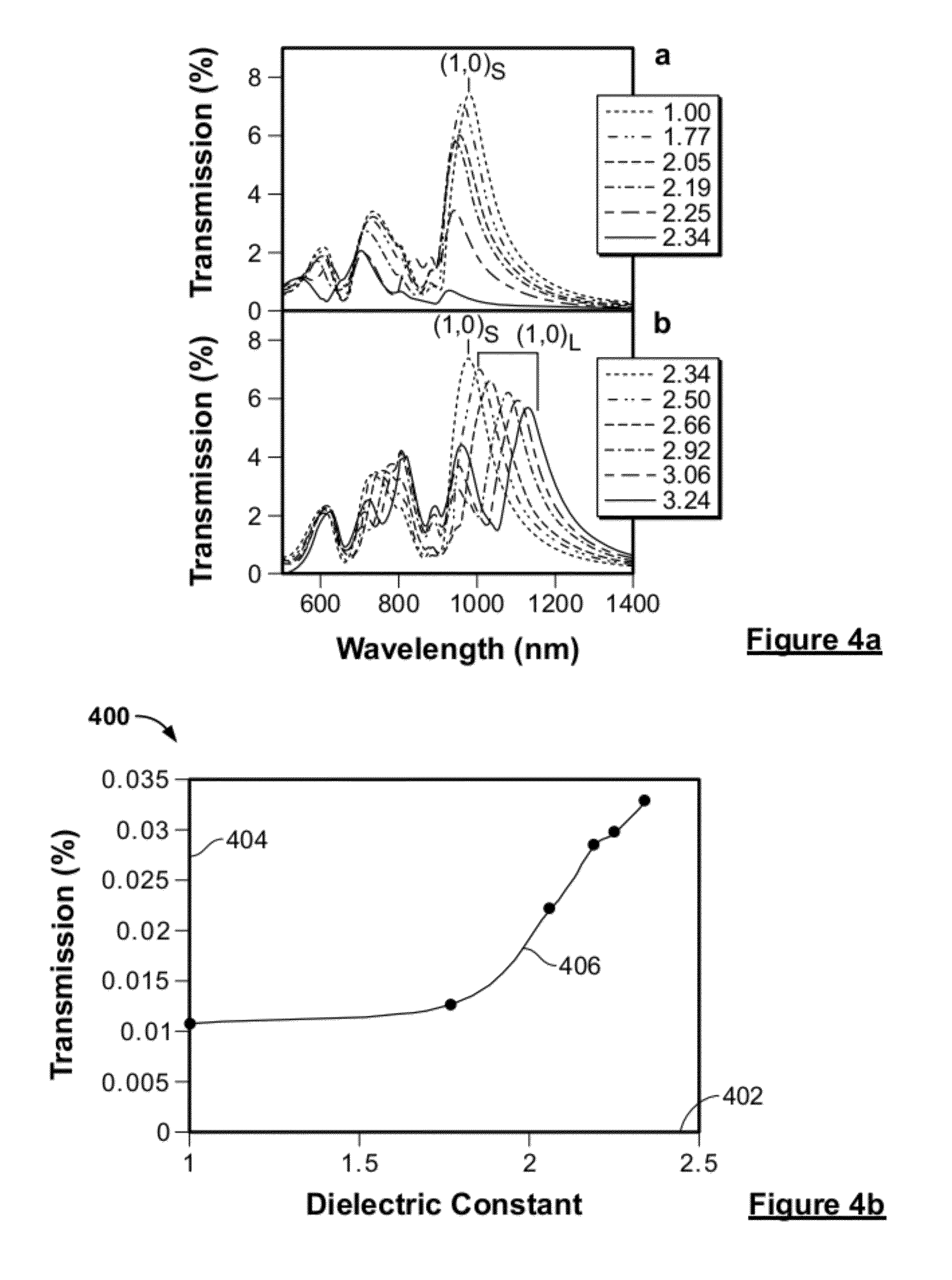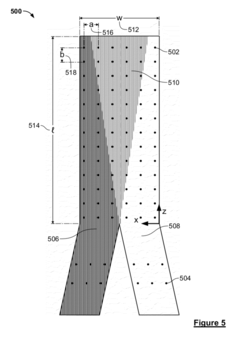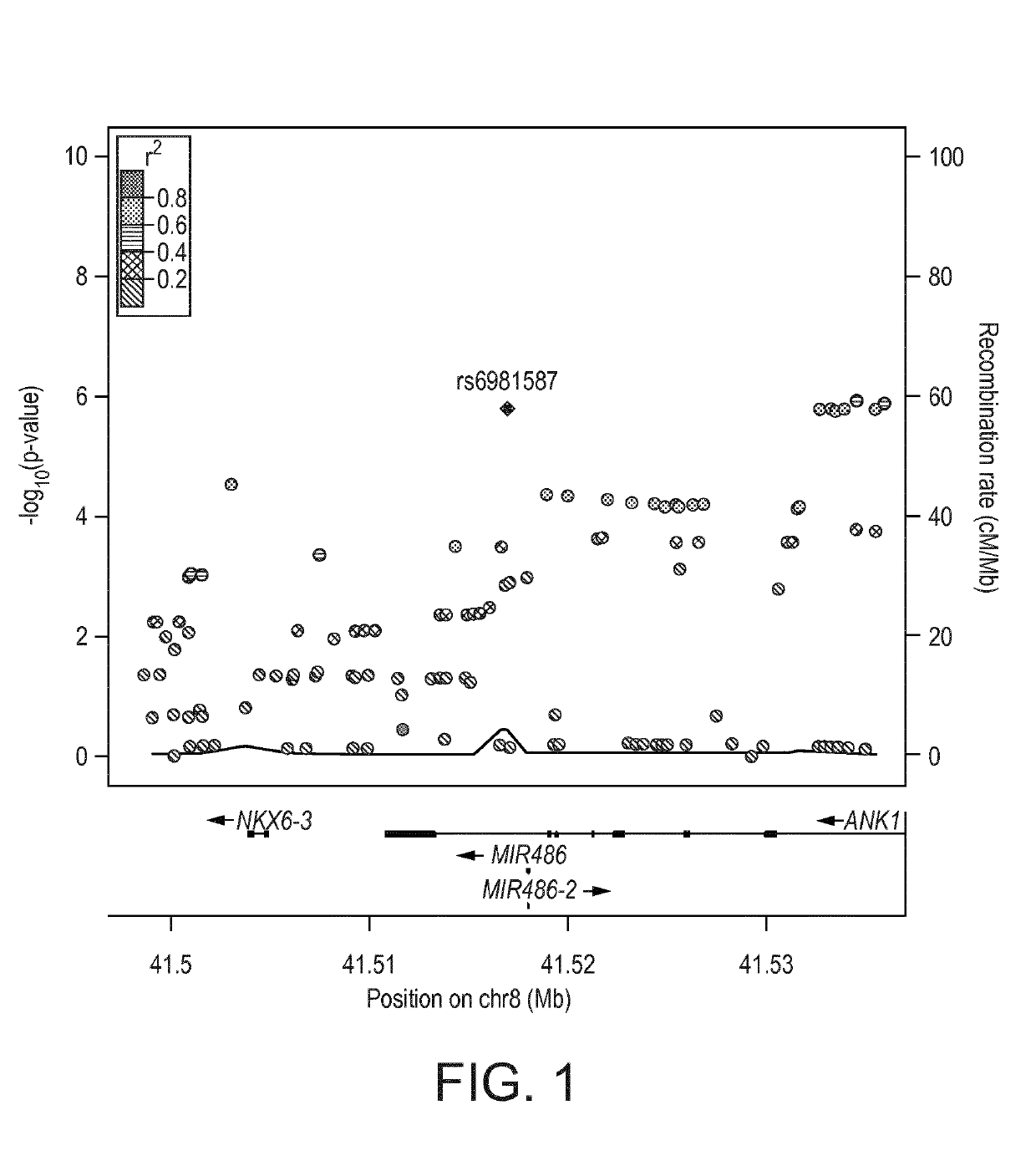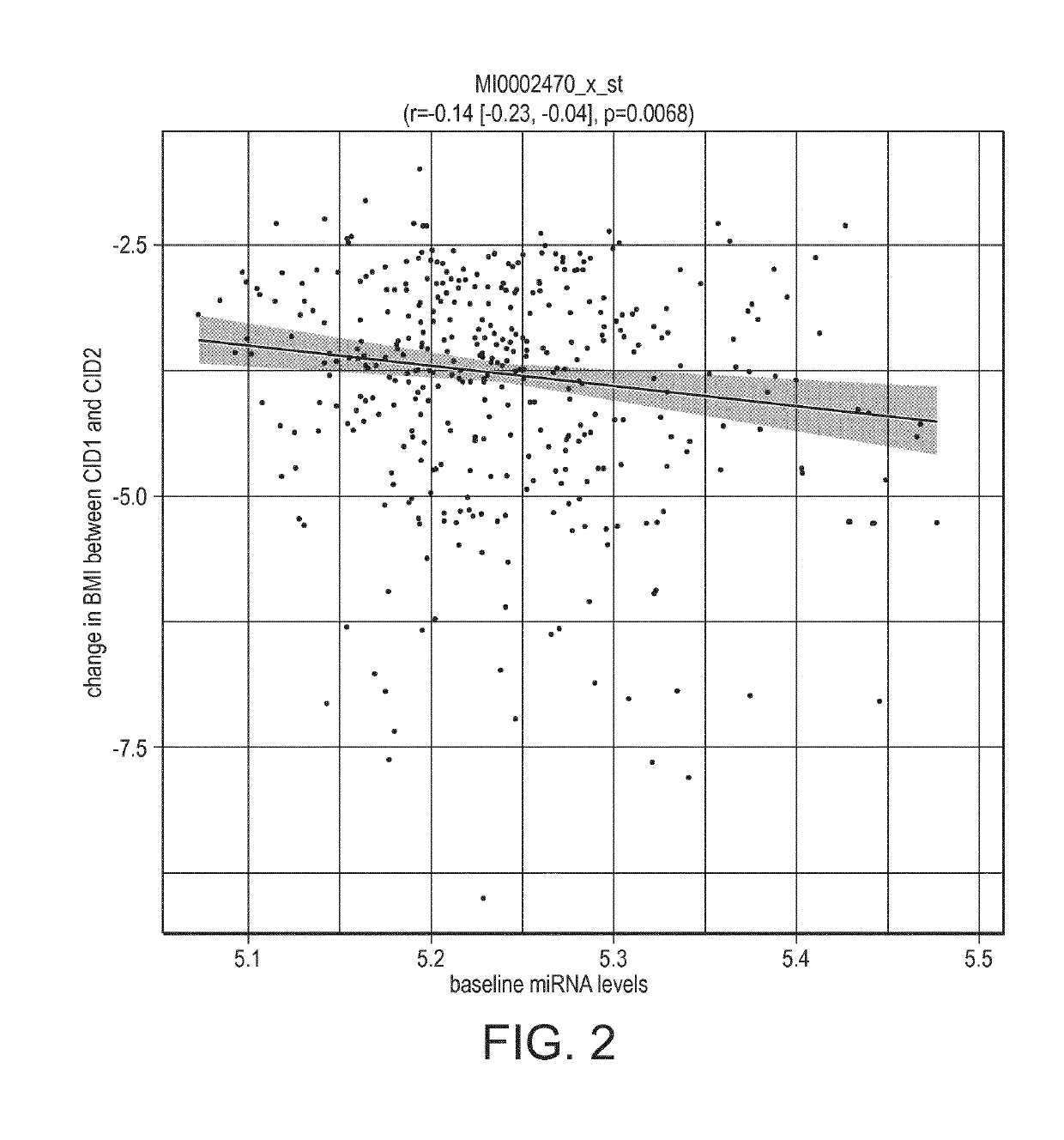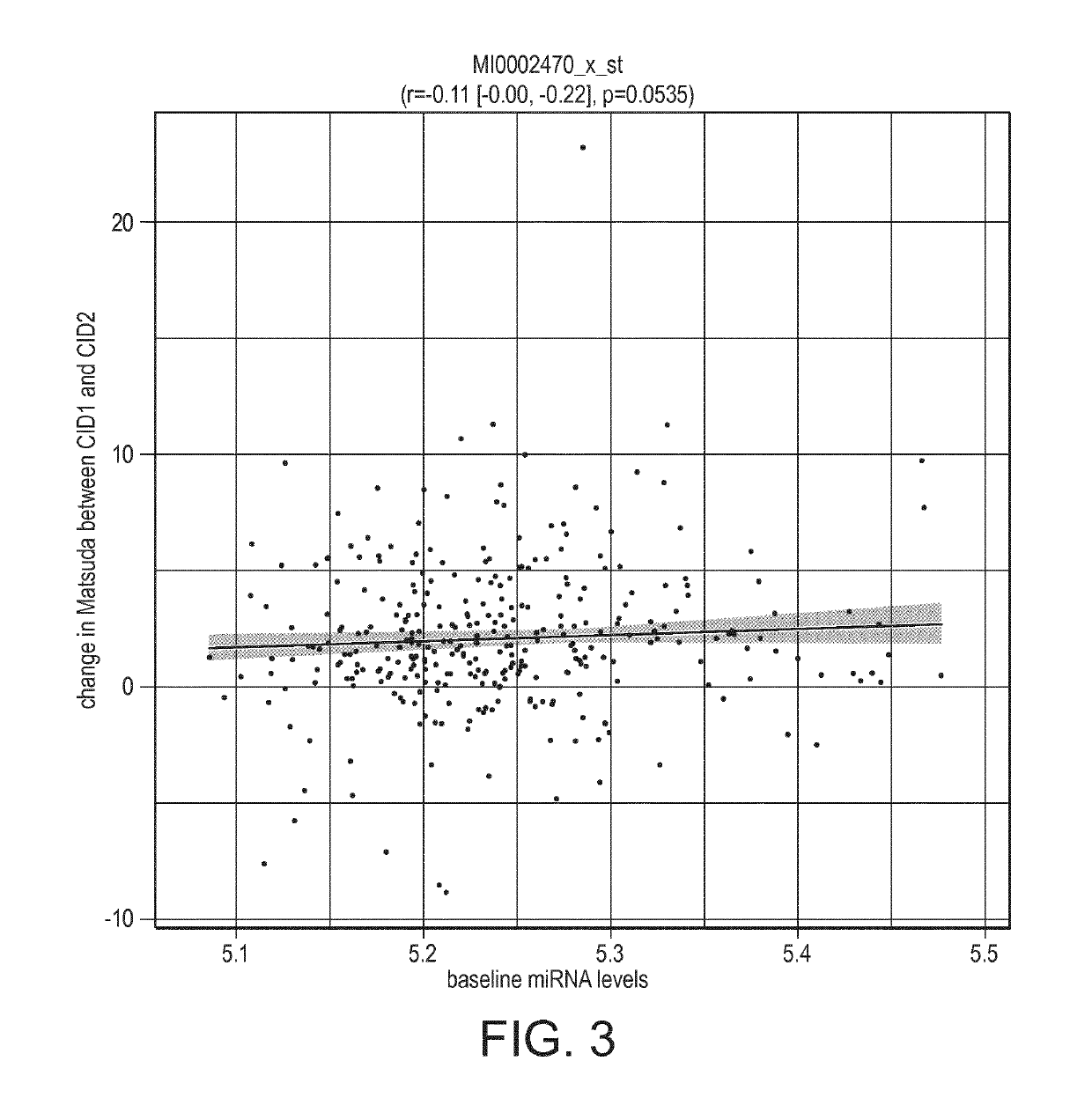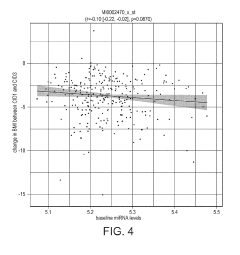The Role of Calorimetry in Analyzing Sports Nutrition Products
AUG 5, 20259 MIN READ
Generate Your Research Report Instantly with AI Agent
Patsnap Eureka helps you evaluate technical feasibility & market potential.
Calorimetry in Sports Nutrition: Background and Objectives
Calorimetry has emerged as a crucial tool in the analysis of sports nutrition products, playing a pivotal role in understanding the energy content and metabolic impact of various dietary supplements and foodstuffs. The application of calorimetric techniques in this field has evolved significantly over the past few decades, driven by the growing demand for precise nutritional information in the sports industry.
The primary objective of utilizing calorimetry in sports nutrition is to accurately determine the energy content of food and supplements consumed by athletes. This information is essential for optimizing performance, managing weight, and ensuring proper fueling strategies during training and competition. Calorimetry provides a quantitative measure of the heat released or absorbed during chemical reactions, which directly correlates to the energy available from food sources.
The historical development of calorimetry in nutritional science dates back to the late 19th century, with the invention of the bomb calorimeter by Marcelin Berthelot. However, its application in sports nutrition gained momentum in the latter half of the 20th century, coinciding with the increased focus on scientific approaches to athletic performance enhancement.
In recent years, advancements in calorimetric technologies have led to more sophisticated and precise measurements. Modern techniques, such as differential scanning calorimetry (DSC) and isothermal titration calorimetry (ITC), have expanded the scope of analysis beyond simple energy content determination. These methods now allow for the investigation of protein denaturation, lipid oxidation, and other molecular interactions relevant to the efficacy and stability of sports nutrition products.
The current technological landscape in sports nutrition calorimetry is characterized by a shift towards more portable and user-friendly devices. This trend aims to bridge the gap between laboratory-grade measurements and real-world applications, enabling athletes and nutritionists to make informed decisions in real-time.
As the field progresses, the integration of calorimetry with other analytical techniques, such as spectroscopy and chromatography, is expected to provide a more comprehensive understanding of the nutritional properties of sports products. This holistic approach will likely lead to the development of more targeted and effective nutrition strategies for athletes across various disciplines.
The future objectives of calorimetry in sports nutrition research include enhancing the accuracy of energy expenditure predictions, developing personalized nutrition plans based on individual metabolic profiles, and investigating the thermogenic effects of novel supplements. Additionally, there is a growing interest in exploring the relationship between caloric intake, nutrient timing, and performance optimization in different sporting contexts.
The primary objective of utilizing calorimetry in sports nutrition is to accurately determine the energy content of food and supplements consumed by athletes. This information is essential for optimizing performance, managing weight, and ensuring proper fueling strategies during training and competition. Calorimetry provides a quantitative measure of the heat released or absorbed during chemical reactions, which directly correlates to the energy available from food sources.
The historical development of calorimetry in nutritional science dates back to the late 19th century, with the invention of the bomb calorimeter by Marcelin Berthelot. However, its application in sports nutrition gained momentum in the latter half of the 20th century, coinciding with the increased focus on scientific approaches to athletic performance enhancement.
In recent years, advancements in calorimetric technologies have led to more sophisticated and precise measurements. Modern techniques, such as differential scanning calorimetry (DSC) and isothermal titration calorimetry (ITC), have expanded the scope of analysis beyond simple energy content determination. These methods now allow for the investigation of protein denaturation, lipid oxidation, and other molecular interactions relevant to the efficacy and stability of sports nutrition products.
The current technological landscape in sports nutrition calorimetry is characterized by a shift towards more portable and user-friendly devices. This trend aims to bridge the gap between laboratory-grade measurements and real-world applications, enabling athletes and nutritionists to make informed decisions in real-time.
As the field progresses, the integration of calorimetry with other analytical techniques, such as spectroscopy and chromatography, is expected to provide a more comprehensive understanding of the nutritional properties of sports products. This holistic approach will likely lead to the development of more targeted and effective nutrition strategies for athletes across various disciplines.
The future objectives of calorimetry in sports nutrition research include enhancing the accuracy of energy expenditure predictions, developing personalized nutrition plans based on individual metabolic profiles, and investigating the thermogenic effects of novel supplements. Additionally, there is a growing interest in exploring the relationship between caloric intake, nutrient timing, and performance optimization in different sporting contexts.
Market Analysis of Sports Nutrition Products
The sports nutrition products market has experienced significant growth in recent years, driven by increasing health consciousness, fitness trends, and the rising popularity of sports and athletic activities. This market segment encompasses a wide range of products, including protein powders, energy bars, sports drinks, and performance-enhancing supplements, all designed to support athletic performance and recovery.
Global market research indicates that the sports nutrition market was valued at approximately $44 billion in 2021 and is projected to reach $85 billion by 2028, with a compound annual growth rate (CAGR) of around 8.5% during this period. This robust growth is attributed to several factors, including the expanding consumer base beyond professional athletes to include fitness enthusiasts and health-conscious individuals.
The market is characterized by a high degree of product innovation and diversification. Manufacturers are continuously developing new formulations and flavors to cater to evolving consumer preferences and dietary requirements. Plant-based and organic sports nutrition products have gained significant traction, reflecting the broader shift towards more sustainable and natural food options.
Geographically, North America dominates the sports nutrition market, accounting for the largest market share. This is primarily due to the region's well-established fitness culture, high disposable income, and strong presence of major market players. However, the Asia-Pacific region is expected to witness the fastest growth in the coming years, driven by increasing health awareness, rising disposable incomes, and a growing fitness culture in countries like China and India.
The competitive landscape of the sports nutrition market is highly fragmented, with a mix of large multinational corporations and smaller specialized companies. Key players include Glanbia, Abbott Nutrition, PepsiCo, and Clif Bar & Company, among others. These companies are investing heavily in research and development to create innovative products and gain a competitive edge.
Consumer trends in the sports nutrition market indicate a growing demand for personalized nutrition solutions. This has led to the emergence of customized nutrition plans and products tailored to individual needs based on factors such as body composition, fitness goals, and genetic profiles. Additionally, there is an increasing focus on clean label products, with consumers seeking transparency in ingredient sourcing and manufacturing processes.
The role of calorimetry in analyzing sports nutrition products is becoming increasingly important in this dynamic market landscape. As consumers become more knowledgeable about nutrition and demand products that deliver specific caloric and nutritional profiles, manufacturers are relying on calorimetric analysis to ensure product quality, consistency, and efficacy. This analytical technique allows for precise measurement of energy content and helps in optimizing product formulations to meet the diverse needs of athletes and fitness enthusiasts.
Global market research indicates that the sports nutrition market was valued at approximately $44 billion in 2021 and is projected to reach $85 billion by 2028, with a compound annual growth rate (CAGR) of around 8.5% during this period. This robust growth is attributed to several factors, including the expanding consumer base beyond professional athletes to include fitness enthusiasts and health-conscious individuals.
The market is characterized by a high degree of product innovation and diversification. Manufacturers are continuously developing new formulations and flavors to cater to evolving consumer preferences and dietary requirements. Plant-based and organic sports nutrition products have gained significant traction, reflecting the broader shift towards more sustainable and natural food options.
Geographically, North America dominates the sports nutrition market, accounting for the largest market share. This is primarily due to the region's well-established fitness culture, high disposable income, and strong presence of major market players. However, the Asia-Pacific region is expected to witness the fastest growth in the coming years, driven by increasing health awareness, rising disposable incomes, and a growing fitness culture in countries like China and India.
The competitive landscape of the sports nutrition market is highly fragmented, with a mix of large multinational corporations and smaller specialized companies. Key players include Glanbia, Abbott Nutrition, PepsiCo, and Clif Bar & Company, among others. These companies are investing heavily in research and development to create innovative products and gain a competitive edge.
Consumer trends in the sports nutrition market indicate a growing demand for personalized nutrition solutions. This has led to the emergence of customized nutrition plans and products tailored to individual needs based on factors such as body composition, fitness goals, and genetic profiles. Additionally, there is an increasing focus on clean label products, with consumers seeking transparency in ingredient sourcing and manufacturing processes.
The role of calorimetry in analyzing sports nutrition products is becoming increasingly important in this dynamic market landscape. As consumers become more knowledgeable about nutrition and demand products that deliver specific caloric and nutritional profiles, manufacturers are relying on calorimetric analysis to ensure product quality, consistency, and efficacy. This analytical technique allows for precise measurement of energy content and helps in optimizing product formulations to meet the diverse needs of athletes and fitness enthusiasts.
Current Calorimetry Techniques and Challenges
Calorimetry plays a crucial role in analyzing sports nutrition products, with several techniques currently employed in the field. Bomb calorimetry remains a standard method for determining the total energy content of food products. This technique involves combusting a sample in a sealed chamber and measuring the heat released. While accurate for gross energy determination, it does not account for the bioavailability of nutrients or the body's ability to utilize them.
Differential scanning calorimetry (DSC) has gained prominence in recent years for its ability to analyze thermal properties of food components. This technique measures the heat flow required to increase the temperature of a sample compared to a reference, providing insights into phase transitions, protein denaturation, and other thermal events relevant to sports nutrition products. DSC is particularly useful for studying the stability and interactions of ingredients in complex formulations.
Isothermal titration calorimetry (ITC) has emerged as a powerful tool for investigating molecular interactions in sports nutrition products. It measures the heat released or absorbed during binding events, offering valuable information on the thermodynamics of protein-ligand interactions, enzyme kinetics, and the formation of complexes between nutrients and other food components. This technique is especially relevant for studying the behavior of functional ingredients in sports supplements.
Despite these advancements, several challenges persist in the application of calorimetry to sports nutrition analysis. One significant hurdle is the complexity of food matrices, which can interfere with accurate measurements and interpretation of results. The presence of multiple ingredients with varying thermal properties can complicate the analysis and require sophisticated data processing techniques to extract meaningful information.
Another challenge lies in the limited correlation between calorimetric measurements and the actual physiological impact of sports nutrition products. While calorimetry provides valuable data on energy content and molecular interactions, it does not directly translate to performance enhancement or nutritional efficacy in athletes. Bridging this gap requires integrating calorimetric data with other analytical techniques and in vivo studies.
The miniaturization and automation of calorimetric instruments present both opportunities and challenges. While these advancements improve throughput and reduce sample size requirements, they also introduce potential issues related to sensitivity and reproducibility. Ensuring the accuracy and reliability of measurements across different scales and instrument configurations remains an ongoing challenge in the field.
Furthermore, the development of standardized protocols and reference materials specific to sports nutrition products is an area that requires attention. The diverse nature of these products, ranging from energy gels to protein powders, necessitates tailored approaches to calorimetric analysis. Establishing industry-wide standards would enhance comparability and reliability of results across different laboratories and studies.
Differential scanning calorimetry (DSC) has gained prominence in recent years for its ability to analyze thermal properties of food components. This technique measures the heat flow required to increase the temperature of a sample compared to a reference, providing insights into phase transitions, protein denaturation, and other thermal events relevant to sports nutrition products. DSC is particularly useful for studying the stability and interactions of ingredients in complex formulations.
Isothermal titration calorimetry (ITC) has emerged as a powerful tool for investigating molecular interactions in sports nutrition products. It measures the heat released or absorbed during binding events, offering valuable information on the thermodynamics of protein-ligand interactions, enzyme kinetics, and the formation of complexes between nutrients and other food components. This technique is especially relevant for studying the behavior of functional ingredients in sports supplements.
Despite these advancements, several challenges persist in the application of calorimetry to sports nutrition analysis. One significant hurdle is the complexity of food matrices, which can interfere with accurate measurements and interpretation of results. The presence of multiple ingredients with varying thermal properties can complicate the analysis and require sophisticated data processing techniques to extract meaningful information.
Another challenge lies in the limited correlation between calorimetric measurements and the actual physiological impact of sports nutrition products. While calorimetry provides valuable data on energy content and molecular interactions, it does not directly translate to performance enhancement or nutritional efficacy in athletes. Bridging this gap requires integrating calorimetric data with other analytical techniques and in vivo studies.
The miniaturization and automation of calorimetric instruments present both opportunities and challenges. While these advancements improve throughput and reduce sample size requirements, they also introduce potential issues related to sensitivity and reproducibility. Ensuring the accuracy and reliability of measurements across different scales and instrument configurations remains an ongoing challenge in the field.
Furthermore, the development of standardized protocols and reference materials specific to sports nutrition products is an area that requires attention. The diverse nature of these products, ranging from energy gels to protein powders, necessitates tailored approaches to calorimetric analysis. Establishing industry-wide standards would enhance comparability and reliability of results across different laboratories and studies.
Calorimetry Methods for Analyzing Sports Supplements
01 Calorimetry devices for measuring energy content
Various calorimetry devices are designed to measure the energy content of substances. These devices typically involve controlled combustion or heat exchange processes to determine the caloric value of materials. Advanced sensors and precision measurement techniques are employed to ensure accurate results.- Calorimetry devices for measuring energy content: Various calorimetry devices are designed to measure the energy content of substances. These devices typically involve combustion chambers, temperature sensors, and data processing units to accurately determine the heat released during reactions. Advanced systems may incorporate automated sample handling and precise control mechanisms to ensure reliable measurements.
- Methods for determining energy content in food: Techniques for measuring the energy content in food samples often involve bomb calorimetry or indirect calorimetry methods. These approaches may include sample preparation, controlled combustion, and analysis of exhaled gases. Some methods focus on non-destructive analysis using spectroscopic techniques or mathematical models based on food composition.
- Calorimetry in metabolic rate assessment: Calorimetry is applied in measuring metabolic rates and energy expenditure in living organisms. This involves analyzing respiratory gas exchange, heat production, and sometimes incorporating additional physiological parameters. Advanced systems may use wearable sensors or integrated chambers for continuous monitoring of energy metabolism.
- Differential scanning calorimetry for material analysis: Differential scanning calorimetry (DSC) is used to analyze the thermal properties and energy content of materials. This technique measures heat flow differences between a sample and a reference as they are subjected to controlled temperature changes. DSC is particularly useful in studying phase transitions, chemical reactions, and material characterization.
- Calorimetry in industrial process monitoring: Calorimetry techniques are applied in industrial settings to monitor and optimize processes. This includes measuring reaction enthalpies, heat transfer in equipment, and energy balances in chemical processes. Advanced systems may incorporate real-time monitoring, predictive modeling, and integration with process control systems for improved efficiency and safety.
02 Energy content analysis in food and nutrition
Calorimetry techniques are applied to analyze the energy content of food and nutritional substances. This involves measuring the heat released during combustion or metabolism of food samples. The data obtained is crucial for determining nutritional values, creating dietary plans, and understanding metabolic processes.Expand Specific Solutions03 Calorimetry in medical and physiological applications
Calorimetry is used in medical and physiological studies to measure energy expenditure in living organisms. This includes analyzing metabolic rates, assessing thermal properties of tissues, and evaluating the energy content of biological samples. Such applications aid in diagnosing metabolic disorders and optimizing treatment strategies.Expand Specific Solutions04 Advanced calorimetry methods and algorithms
Innovative calorimetry methods and algorithms are developed to enhance the accuracy and efficiency of energy content measurements. These advancements include improved data processing techniques, novel sensor designs, and sophisticated calibration procedures. Such innovations contribute to more precise and reliable calorimetric analyses across various fields.Expand Specific Solutions05 Industrial applications of calorimetry for energy content determination
Calorimetry techniques are widely used in industrial settings to determine the energy content of fuels, chemicals, and materials. This includes applications in quality control, product development, and process optimization. Specialized calorimeters are designed to handle diverse sample types and operating conditions encountered in industrial environments.Expand Specific Solutions
Key Players in Sports Nutrition and Calorimetry
The calorimetry market in sports nutrition analysis is in a growth phase, driven by increasing demand for precise nutritional data in athletic performance. The global market size is expanding, with projections indicating significant growth in the coming years. Technologically, calorimetry in sports nutrition is advancing rapidly, with companies like Nestlé, Medtronic, and Roche Diagnostics leading innovation. These firms are developing more accurate and user-friendly calorimetry devices, integrating advanced sensors and data analytics. Emerging players such as PEAR Sports and Enervit are also contributing to market dynamism, focusing on specialized applications for athletes and fitness enthusiasts.
Société des Produits Nestlé SA
Technical Solution: Nestlé employs advanced calorimetry techniques to analyze the energy content and metabolic effects of their sports nutrition products. They utilize both direct and indirect calorimetry methods to measure the heat produced by food digestion and metabolism. Their approach includes bomb calorimetry for precise measurement of total energy content, and respiratory calorimetry to assess how the body utilizes different nutrients during exercise[1]. Nestlé has developed a proprietary metabolic chamber that allows for long-term energy expenditure measurements in near free-living conditions, providing insights into the real-world impact of their products on athletes' energy balance[2]. Additionally, they employ differential scanning calorimetry to study the thermal properties of their product formulations, ensuring optimal stability and bioavailability of key nutrients[3].
Strengths: Comprehensive calorimetry toolkit, proprietary metabolic chamber for real-world testing, ability to link product composition to metabolic outcomes. Weaknesses: High cost of advanced calorimetry equipment, potential limitations in translating controlled lab results to diverse athletic populations.
Cargill, Inc.
Technical Solution: Cargill applies calorimetry in the development and analysis of sports nutrition ingredients and products. They use differential scanning calorimetry (DSC) to characterize the thermal behavior of their carbohydrate and protein ingredients, which is crucial for understanding how these components will perform in various sports nutrition applications[7]. Cargill has invested in high-sensitivity isothermal titration calorimetry (ITC) to study the binding interactions between their ingredients and other components in sports nutrition formulations, allowing for optimized nutrient delivery systems[8]. Additionally, they employ indirect calorimetry in human trials to assess the metabolic impact of their ingredients, measuring parameters such as energy expenditure and substrate oxidation rates during exercise and recovery[9].
Strengths: Extensive ingredient characterization capabilities, advanced binding interaction studies, integration of human metabolic data. Weaknesses: Primary focus on ingredients rather than finished products, potential challenges in translating ingredient-level findings to complex formulations.
Innovations in Calorimetric Analysis for Sports Nutrition
System and method for a microfluidic calorimeter
PatentActiveUS20120264224A1
Innovation
- A microfluidic calorimetry system utilizing microscale temperature sensors and nanohole arrays in a metal film to measure temperature changes in microfluidic laminar flow, allowing for precise calorimetry measurements with reduced reagent volumes and improved experimental efficiency.
Biomarkers for predicting degree of weight loss
PatentActiveUS20190330697A1
Innovation
- The use of microRNA-486 (miR-486) levels and specific polymorphic positions genetically linked to miR-486, such as rs545936, rs6981587, and rs190249167, to determine the predisposition of subjects to weight loss and glycemic control improvements through genetic analysis.
Regulatory Framework for Sports Nutrition Products
The regulatory framework for sports nutrition products plays a crucial role in ensuring consumer safety, product quality, and fair competition within the industry. In the United States, the Food and Drug Administration (FDA) is the primary regulatory body overseeing these products. The FDA classifies most sports nutrition products as dietary supplements, which fall under the Dietary Supplement Health and Education Act (DSHEA) of 1994.
Under DSHEA, manufacturers are responsible for ensuring the safety of their products before they are marketed. This includes adhering to Good Manufacturing Practices (GMPs) to ensure product quality and consistency. The FDA has the authority to take action against unsafe or misbranded products after they reach the market.
Labeling requirements for sports nutrition products are stringent. Manufacturers must provide a Supplement Facts panel, listing all ingredients and their amounts. Any claims made on the product label must be substantiated and cannot mislead consumers. Structure-function claims are allowed, but disease claims are prohibited without prior FDA approval.
The Federal Trade Commission (FTC) also plays a role in regulating the advertising of sports nutrition products. The FTC ensures that advertising is truthful and not misleading, particularly regarding product efficacy claims.
Internationally, regulations vary significantly. The European Union, for example, has stricter regulations on dietary supplements, including sports nutrition products. The European Food Safety Authority (EFSA) evaluates scientific evidence for health claims, and only approved claims can be used on product labels.
In recent years, there has been increased scrutiny on sports nutrition products, particularly those containing novel ingredients or making bold performance claims. This has led to more rigorous testing requirements and stricter enforcement of existing regulations.
The use of calorimetry in analyzing sports nutrition products intersects with these regulatory frameworks. Calorimetric data can be used to verify label claims regarding caloric content and macronutrient composition. This aligns with the FDA's requirement for accurate labeling and can help manufacturers demonstrate compliance with regulations.
As the sports nutrition market continues to grow and innovate, regulatory bodies are likely to adapt their frameworks to address new challenges. This may include more specific guidelines for emerging ingredients, enhanced testing protocols, and potentially, the integration of calorimetric analysis as a standard quality control measure.
Under DSHEA, manufacturers are responsible for ensuring the safety of their products before they are marketed. This includes adhering to Good Manufacturing Practices (GMPs) to ensure product quality and consistency. The FDA has the authority to take action against unsafe or misbranded products after they reach the market.
Labeling requirements for sports nutrition products are stringent. Manufacturers must provide a Supplement Facts panel, listing all ingredients and their amounts. Any claims made on the product label must be substantiated and cannot mislead consumers. Structure-function claims are allowed, but disease claims are prohibited without prior FDA approval.
The Federal Trade Commission (FTC) also plays a role in regulating the advertising of sports nutrition products. The FTC ensures that advertising is truthful and not misleading, particularly regarding product efficacy claims.
Internationally, regulations vary significantly. The European Union, for example, has stricter regulations on dietary supplements, including sports nutrition products. The European Food Safety Authority (EFSA) evaluates scientific evidence for health claims, and only approved claims can be used on product labels.
In recent years, there has been increased scrutiny on sports nutrition products, particularly those containing novel ingredients or making bold performance claims. This has led to more rigorous testing requirements and stricter enforcement of existing regulations.
The use of calorimetry in analyzing sports nutrition products intersects with these regulatory frameworks. Calorimetric data can be used to verify label claims regarding caloric content and macronutrient composition. This aligns with the FDA's requirement for accurate labeling and can help manufacturers demonstrate compliance with regulations.
As the sports nutrition market continues to grow and innovate, regulatory bodies are likely to adapt their frameworks to address new challenges. This may include more specific guidelines for emerging ingredients, enhanced testing protocols, and potentially, the integration of calorimetric analysis as a standard quality control measure.
Sustainability in Sports Nutrition Product Development
Sustainability in sports nutrition product development has become a critical focus for manufacturers and consumers alike. As the industry evolves, there is a growing emphasis on creating products that not only enhance athletic performance but also minimize environmental impact. This shift towards sustainability encompasses various aspects of the product lifecycle, from sourcing ingredients to packaging and distribution.
One of the primary considerations in sustainable sports nutrition product development is the selection of ingredients. Manufacturers are increasingly turning to plant-based proteins and other sustainable sources to reduce the carbon footprint associated with animal-based ingredients. This approach not only addresses environmental concerns but also caters to the rising demand for vegan and vegetarian options among athletes.
The use of locally sourced ingredients is another key aspect of sustainability in this sector. By reducing transportation distances, companies can significantly decrease their carbon emissions while supporting local economies. Additionally, the incorporation of organic and non-GMO ingredients aligns with both sustainability goals and consumer preferences for "clean" products.
Packaging innovations play a crucial role in enhancing the sustainability of sports nutrition products. Biodegradable materials, recyclable containers, and reduced plastic usage are becoming increasingly common. Some companies are exploring novel packaging solutions such as edible wrappers or compostable sachets for single-serve products, further minimizing waste.
Water conservation in the production process is another area where sustainability efforts are being focused. Manufacturers are implementing water recycling systems and optimizing their production lines to reduce water consumption without compromising product quality or safety.
Energy efficiency in production facilities is also a key consideration. The adoption of renewable energy sources, such as solar or wind power, and the implementation of energy-efficient equipment are becoming more prevalent in the industry. These initiatives not only reduce the environmental impact but can also lead to long-term cost savings for manufacturers.
The concept of circular economy is gaining traction in sports nutrition product development. This approach emphasizes the importance of designing products with their entire lifecycle in mind, including the potential for recycling or upcycling at the end of their use. Some companies are exploring innovative ways to repurpose byproducts from the production process, further reducing waste and maximizing resource efficiency.
As sustainability becomes increasingly important to consumers, transparency in the supply chain and clear communication of sustainability efforts are becoming differentiating factors for brands. Many companies are now providing detailed information about their sustainability practices, allowing consumers to make informed choices aligned with their values.
One of the primary considerations in sustainable sports nutrition product development is the selection of ingredients. Manufacturers are increasingly turning to plant-based proteins and other sustainable sources to reduce the carbon footprint associated with animal-based ingredients. This approach not only addresses environmental concerns but also caters to the rising demand for vegan and vegetarian options among athletes.
The use of locally sourced ingredients is another key aspect of sustainability in this sector. By reducing transportation distances, companies can significantly decrease their carbon emissions while supporting local economies. Additionally, the incorporation of organic and non-GMO ingredients aligns with both sustainability goals and consumer preferences for "clean" products.
Packaging innovations play a crucial role in enhancing the sustainability of sports nutrition products. Biodegradable materials, recyclable containers, and reduced plastic usage are becoming increasingly common. Some companies are exploring novel packaging solutions such as edible wrappers or compostable sachets for single-serve products, further minimizing waste.
Water conservation in the production process is another area where sustainability efforts are being focused. Manufacturers are implementing water recycling systems and optimizing their production lines to reduce water consumption without compromising product quality or safety.
Energy efficiency in production facilities is also a key consideration. The adoption of renewable energy sources, such as solar or wind power, and the implementation of energy-efficient equipment are becoming more prevalent in the industry. These initiatives not only reduce the environmental impact but can also lead to long-term cost savings for manufacturers.
The concept of circular economy is gaining traction in sports nutrition product development. This approach emphasizes the importance of designing products with their entire lifecycle in mind, including the potential for recycling or upcycling at the end of their use. Some companies are exploring innovative ways to repurpose byproducts from the production process, further reducing waste and maximizing resource efficiency.
As sustainability becomes increasingly important to consumers, transparency in the supply chain and clear communication of sustainability efforts are becoming differentiating factors for brands. Many companies are now providing detailed information about their sustainability practices, allowing consumers to make informed choices aligned with their values.
Unlock deeper insights with Patsnap Eureka Quick Research — get a full tech report to explore trends and direct your research. Try now!
Generate Your Research Report Instantly with AI Agent
Supercharge your innovation with Patsnap Eureka AI Agent Platform!
